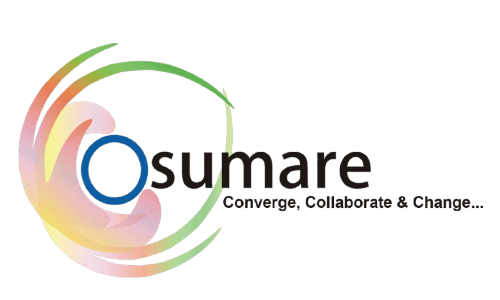
In the ever-evolving digital marketing landscape, professionals and businesses are discovering that social platforms aren’t just for networking—they’re powerful tools for lead generation. Among them, LinkedIn stands tall as a goldmine of B2B opportunities, thanks to its professional user base and content-oriented algorithm. But beyond sharing industry insights and career updates, there’s a more strategic use of LinkedIn that’s often overlooked: turning posts into SEO-optimized lead magnets. This blend of social and search can fuel sustained traffic and attract qualified leads—if done right.
In fact, many brands today are investing in this synergy, and platforms like the Best digital marketing company in Mumbai have begun helping clients transform basic LinkedIn content into powerful conversion tools. Let’s explore how LinkedIn posts can be shaped into assets that not only attract attention on the platform but also enhance your discoverability in search engines and generate leads beyond the platform’s confines.
Why LinkedIn Deserves Your SEO Attention
Most marketers focus on LinkedIn’s immediate reach: impressions, likes, and shares. While these metrics matter, they often miss the deeper value of discoverability. Unlike ephemeral social content on Instagram or X, LinkedIn posts can rank in search engine results—particularly when structured with SEO principles in mind. Google indexes public LinkedIn content, especially those linked to active profiles or company pages with high authority. That means your thoughtful post about industry trends or your latest case study could appear in search results for months, if not years.
Furthermore, LinkedIn’s audience is pre-qualified. It’s full of decision-makers, consultants, and executives who are searching for trustworthy voices and services. When your post ranks well and delivers value, it doesn’t just inform—it attracts leads organically.
The Science Behind SEO-Optimized LinkedIn Posts
So, how exactly does one make a LinkedIn post SEO-friendly? The foundation lies in combining content relevance, keyword integration, and value delivery, all while remaining authentic. Here’s a breakdown of the essential components:
1. Headline Optimization
Your post title functions like an H1 tag in a blog. Use a clear, engaging, keyword-enriched headline. For example, instead of “New Case Study,” try “How We Boosted SaaS Conversion Rates by 45% – A B2B Marketing Case Study.” The latter includes target keywords likely to be searched and offers a promise of insight.
2. Keyword Integration
While LinkedIn doesn’t use metadata like traditional websites, search engines still crawl its content. Embedding relevant industry keywords within your post—without keyword stuffing—can help your content rank. For example, if you’re in healthcare marketing, terms like “patient acquisition strategies” or “HIPAA-compliant campaigns” should be naturally woven into your content.
3. Value-Driven Content
Google ranks content that satisfies search intent. So should your LinkedIn posts. Avoid superficial takes. Instead, share mini-case studies, key takeaways from whitepapers, or even summarized insights from your blog. The more your post teaches or solves, the better it performs—for both readers and algorithms.
4. Hashtag Strategy
While hashtags may feel like a purely social feature, they play a role in discoverability both on LinkedIn and Google. Use 3–5 hashtags, mixing broad ones (#B2BMarketing, #DigitalStrategy) with niche ones (#HealthcareSEO, #SaaSLeadGen). These enhance visibility without appearing spammy.
5. Linking to SEO-Optimized Assets
Include links to longer-form content like blog posts, gated ebooks, or service pages. Ensure these linked destinations are already optimized for SEO with proper titles, meta descriptions, and content structure. This ensures that anyone clicking through continues down the lead funnel seamlessly.
Read more about SEO
Turning Engagement into Leads
Posting SEO-optimized content is just one part of the puzzle. The true power lies in turning that visibility into leads. Here’s how to do it:
A. Include Clear CTAs (Calls-to-Action)
Your LinkedIn post should guide the reader. Whether you want them to download a resource, comment their challenges, or book a call—tell them what to do. For instance, “Looking to optimize your own campaign? Download our free checklist here” is actionable and precise.
B. Drive to Optimized Landing Pages
A CTA should lead to a well-crafted landing page. This is where the lead magnet lives—whether it’s a downloadable guide, a case study, or a consultation form. Make sure the landing page aligns with the content they came from. A disconnect here leads to high bounce rates and lost conversions.
C. Engage in the Comments
LinkedIn’s algorithm favors posts with interaction. When people comment, reply thoughtfully. Ask follow-up questions, tag them if relevant, and extend the conversation. This social interaction boosts visibility and shows your authority, making it more likely for others to click through to your offerings.
D. Repurpose and Re-share
A single high-performing post can be reused across formats—turn it into a carousel, a video summary, or a newsletter. Each version can link back to your lead magnet, creating a spiderweb of opportunities from a single SEO-driven core.
Case Example: From Thought Piece to 50+ Leads
A B2B tech consultant shared a post titled “Why Most SaaS Startups Fail at Lead Nurturing – And How to Fix It.” The post was 500 words long, included 2 strategic keywords, linked to a detailed blog post with a downloadable funnel audit checklist, and ended with a CTA to book a free 15-minute consultation. It was optimized with hashtags like #SaaSMarketing and #LeadNurturing. Over three months, the post ranked on page 1 of Google for “SaaS lead nurturing strategies,” brought in over 10,000 views, and generated 50+ leads, five of which converted into paying clients.
This wasn’t luck—it was a carefully crafted lead magnet embedded in a LinkedIn post, following SEO best practices while remaining authentic to the audience.
The Hidden Power of Consistency
One well-crafted post can yield surprising results. But the real magic happens with consistency. When you regularly publish SEO-optimized content on LinkedIn, you not only increase your chance of ranking—you build trust and authority. Over time, your profile and page become content hubs that Google indexes and prospects revisit.
This consistent content-to-lead flow creates compounding ROI. Each post becomes a small brick in a larger SEO foundation—one that works for you long after the initial publish date.
In Conclusion
LinkedIn is more than just a professional social platform—it’s an underused SEO playground where quality posts can double as lasting lead magnets. By focusing on keyword strategy, content structure, audience intent, and lead-driven CTAs, you can turn everyday LinkedIn updates into engines of long-term value.
And when you need expert guidance to make that transformation scalable and sustainable, partnering with the Best digital marketing company in Mumbai can help you bridge the gap between SEO theory and measurable results. The future of organic lead generation is hybrid—and LinkedIn SEO is your first step in mastering it.

